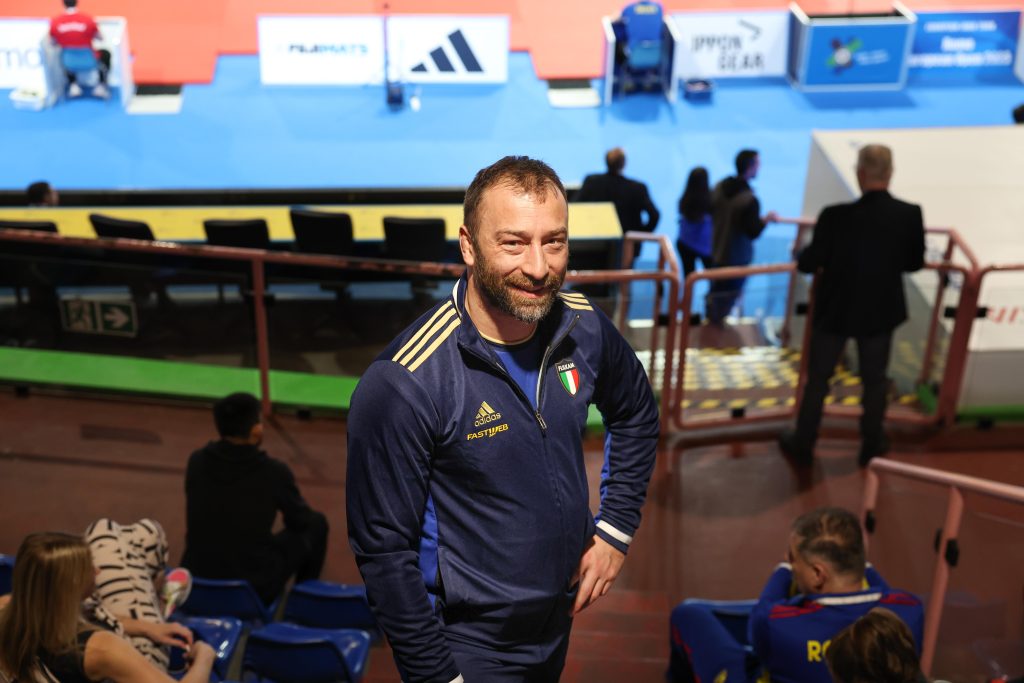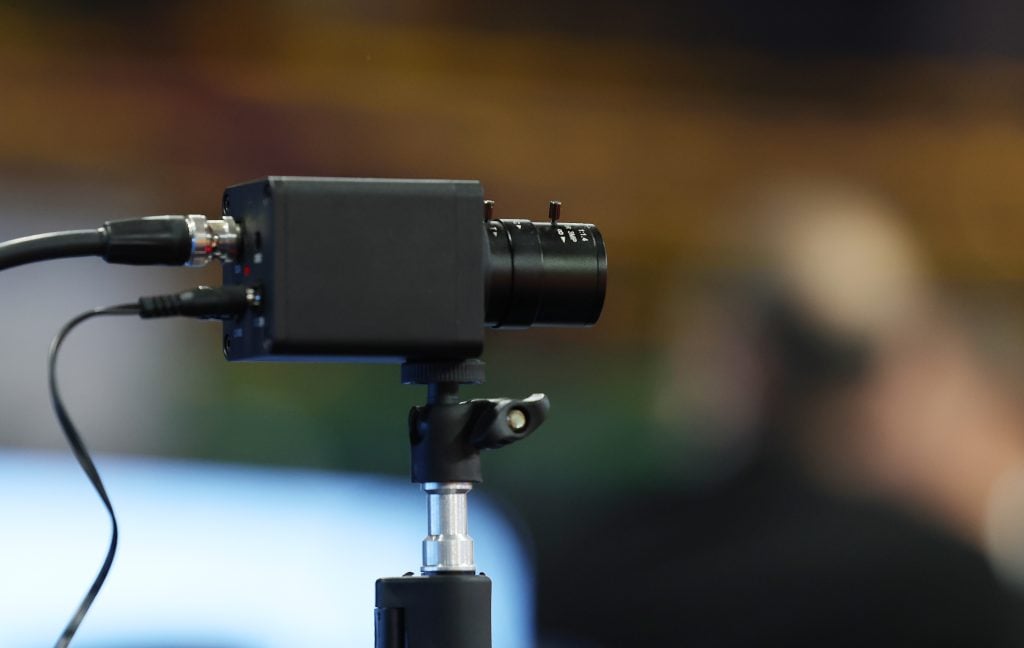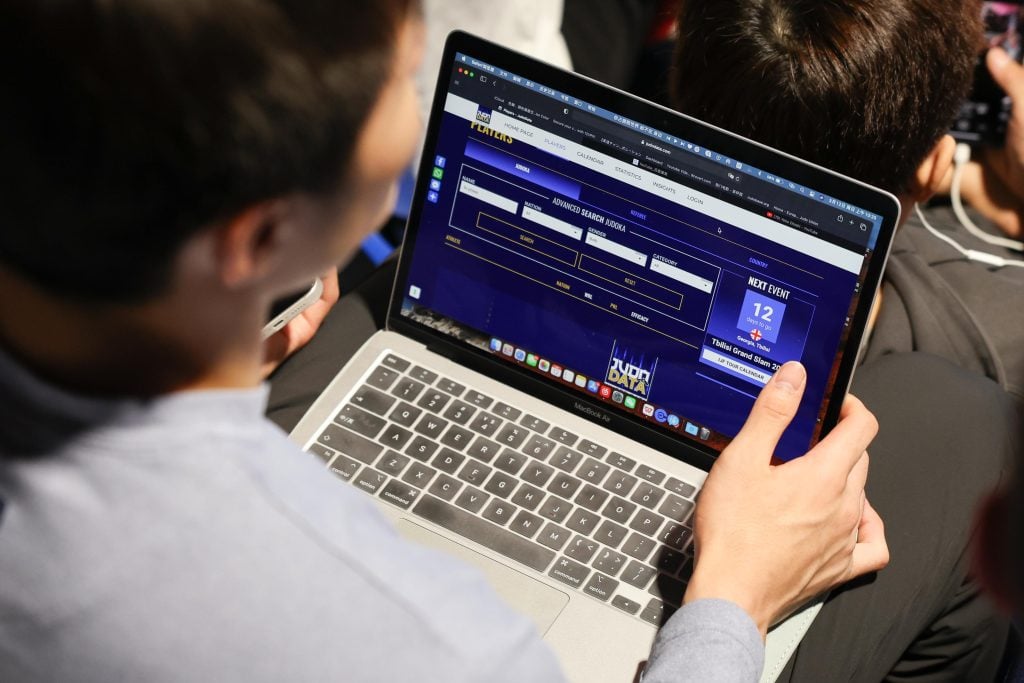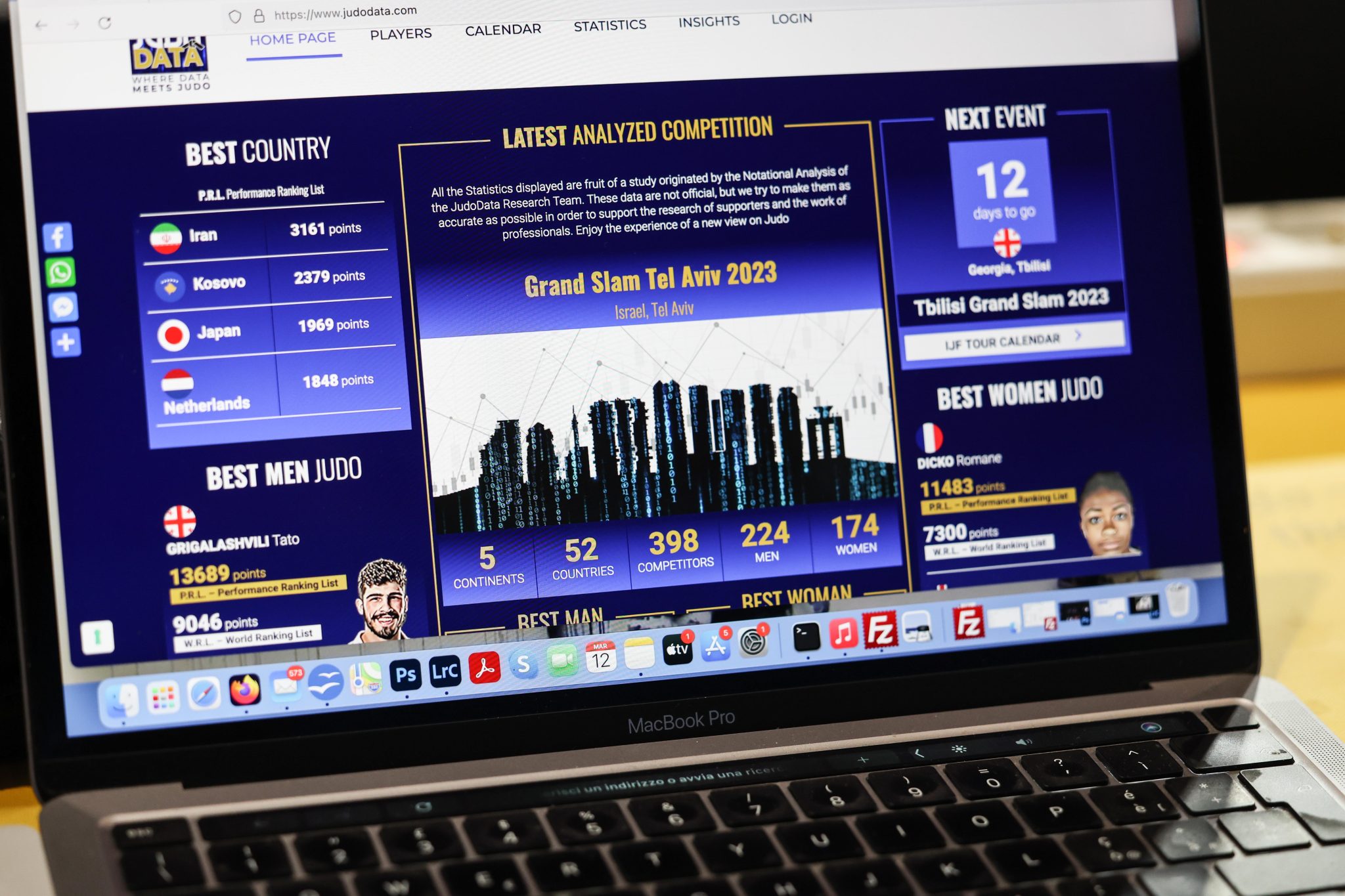For those who are not yet aware, innovative and forward thinking company, Judo Data, is pioneering match analysis in this sport.
Though at one point there was international cooperation to develop this incredible data collection, it has all stemmed from former athlete and current Performance Analysis Manager for the Italian Judo Federation, Emidio CENTRACCHIO. Emidio is the eldest of the Centracchio team, with Tokyo Olympic bronze medallist, Maria and current Junior European silver medallist, Luigi also members of the judo family.
Everything started when I was an athlete and I met some coaches from Eastern Europe in Poland, to be specific Janusz PAWLWOSKI, Marek ADAM of the Sport University of Danzica and the beloved Ryszard ZIENIAWA who passed. When I was there I was 18 years old and they introduced me to a system of stenography and with this system, collected all the techniques and main data of a single contest.
In that moment I had a dream, I asked, why not to do it with a computer and why not to do it automatically?
We are talking about more than 20 years ago, at the time the technology was not so developed and so I had to stop, and of course I was an athlete so my focus was different. Then when I finished competing in 2012, this dream was still there and I started to look around for some technology that can help me to do this job. I am a judoka but I am also the son of a mathematics teacher and I come from scientific studies so numbers are easy for me to manage and from this I started to create this manual system.

Back when we were collaborating on an international level, I worked with British Judo and Nigel DONOHUE who was actually a great promoter of the project and so a part of my work comes from Nigel. For me it is very easy to speak and interact with them and I have a very good cooperation with them to develop tools to give to everybody.
Today in the Olympic Centre, where the full senior national team are collecting before their departure to the Nymburk OTC, we also have Emidio. Though he is working closely with the coaches and athletes, there is another purpose for his presence in the Rome European Open. On mat 2, the central tatami, barely noticeable are four fixed cameras, collecting footage and data to be processed through a Notational Analysis system and the collected data will be used for the ‘training’ of an AI (artificial intelligence) system.
I started to think about an AI system because right now, manually, I cannot detect all the competition, because the time spent is huge, so before the pandemic situation I started with an Italian company to study if it was possible to do this and it was, with good accuracy. I arrived at 70% accuracy in the recognition of koshi waza, ashi waza, te waza, and ne waza, just with four cameras in the club, so with a strong system in a real situation I am confident that it will work, for sure it will be ready for the Olympic Games to record, and after the Olympics I am sure that I will be able to give an updated system that recognises techniques.
There are many sports that we can say are easier to analyse because actions are more fragmented and points are simple to analyse, also technical actions whereas judo is very complex and very complicated. So I said how can I measure what is very difficult to measure? I started to think about a system that could record everything that happens, and then translate those records in to numbers to present statistics that can show the key performance indicators [KPIs] of the athletes.
The AI system Emidio plans to retrain will use the data gathered this weekend in Rome to contribute to a much more efficient system, that not only detects techniques but also the information we are currently missing like ‘no score’ attacks for example, which account for 91% of movements as the efficacy is currently on average only 9%. For so many; coaches, athletes, referees and the media alike, statistics allow us to share information in a universal language. When asked how he feels regarding peoples opinions that statistics remove the ‘feel’ element of the sport, Emidio makes a clear point.

The most important thing in judo, is the judo, how athletes can feel their judo, and how coaches can train and make athletes understand judo and what they have to do. Statistics and match analysis is simply, and I don’t say that to undervalue what I am doing, but because it is simply a tool that helps the work of the athletes and coaches.
Of course it is a really new tool and it is very difficult to change what, in the past, was not. We have to underline something, because video analysis has always been done, when I was a young athlete there was only the video tape from the Olympic Games and we watched over and over these same contests to see what the champions were doing. Then time and technology changed, I, as an athlete then had the portable video camera so we started to record it ourselves and today we have the power of the internet and the great effort from the EJU and IJF to let the people watch everything.
The goal in the building of the AI system, is to open the analysis of every level. We have to remember that match analysis was first recorded 5th Century BC in ‘The Art of War’ by Sun Tzu and we always have to remember to know yourself, know your enemy and the outcome of 100 battles will never be in doubt. So you can study your opponent but you must know yourself, that is why the system will help the younger athletes to develop themselves.

This project began prior to the pandemic but now that it is back up and running, are there any technological hurdles to overcome?
I think right now in terms of technology, it is strong enough that it will not give us any problems in terms of collecting the data. The challenge is to first create a system that records everything, it is in two phases. The first is Notational Analysis, so the annotation of what happens and another part that is the itemisation of the records. This is a second phase because first we need to record as many events as possible, itemise as many of them as we can and then retrain the system but from the study I did before the pandemic I don’t think I will have any problems.
It will not only be helping those using the data, but Emidio himself as he currently dedicates an unfathomable amount of time analysing the current video footage.
To record this information manually, I need to have the time equal to the contest, twice over, so when I see events likes Almada Grand Prix with over 500 athletes, I know how difficult it is going to be. Of course this work gives me a different point of view of competition and now I understand many things, and as the performance analysis manager for the Italian team, I can better explain to them why something is the way it is and try to help them in training, understanding behaviours they should avoid.
Emidio’s goal to achieve efficiency in data analysis ties in with Jigoro Kano’s use of the Japanese phrase, ‘maximum efficiency with minimal effort’, albeit from the modern day perspective. Explore the extensive data collection on the website for Judo Data!
Author: Thea Cowen




